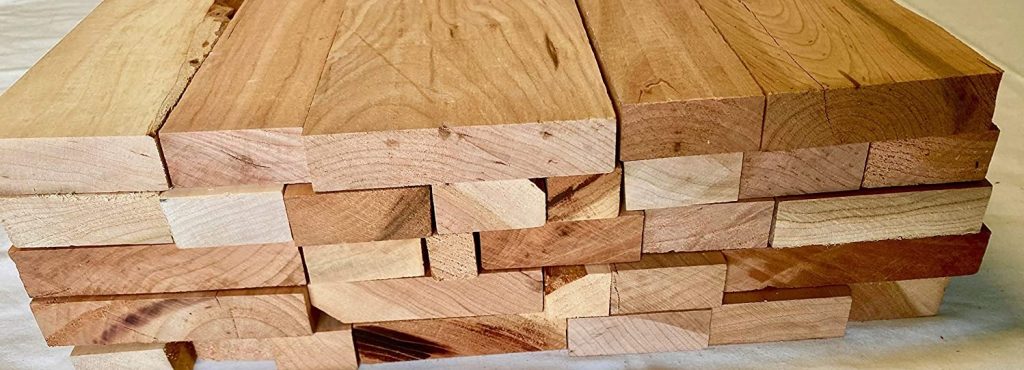
When it comes to woodworking, the choice of wood species can greatly affect the final product’s durability, appearance, and cost. One way to measure wood hardness is through the Janka Hardness Test. The Janka Test (Janka Hardness Rating) is a measure of the resistance of a wood species to denting and wear. It’s named after Gabriel Janka, an Austrian wood researcher who developed the test in 1906. The test involves measuring the force required to embed a small steel ball into the wood to half its diameter. The Janka Hardness Rating is expressed in pounds-force (lbf), and higher numbers indicate greater hardness and durability.
For furniture making, hardwoods with high Janka Hardness Ratings are generally preferred, as they can withstand wear and tear and are less prone to denting or scratching. Some popular hardwoods for furniture making include hard maple, oak, and cherry.
In contrast, softer woods with lower Janka Hardness Ratings are often used for decorative purposes such as carvings or scrollwork. Examples of softwoods include western red cedar and Eastern white pine.
For flooring, woods with a higher Janka Hardness Rating are also preferred, as they can better withstand the foot traffic and furniture that a floor is exposed to. Some popular flooring options include Brazilian walnut, Brazilian cherry, and red oak.
Woodworkers who create cutting boards or kitchen utensils prefer woods that are both hard and non-toxic. Examples of such woods include hard maple and black walnut.
While a higher Janka Hardness Rating generally means greater durability, it can also make the wood more difficult to work with, as harder woods may be more difficult to saw, sand, or nail. It is important to carefully consider the properties of each wood species before choosing one for a specific project.
That being said, the hardness of a wood species is just one factor to consider when selecting the appropriate wood for a project. Other factors such as color, grain pattern, stability, and workability may also be important considerations.
Below is a chart of common wood species and their Janka Hardness Rating.
| Wood Species | Janka Hardness Rating (Pounds-Force, LBF) |
|---|---|
| Balsa | 90 |
| Atlantic White Cedar | 350 |
| White Pine | 380 |
| Basswood | 410 |
| Parota | 470 |
| Butternut | 490 |
| Obeche | 490 |
| Cypress | 510 |
| Poplar | 540 |
| Alder | 590 |
| Spanish Cedar | 600 |
| Norfolk Island Pine | 650 |
| Southern Yellow Pine | 690 |
| Sycamore | 770 |
| Florida Mahogany | 800 |
| African Mahogany | 830 |
| Lacewood | 840 |
| Cambara Mahogany | 860 |
| Australian Lacewood | 880 |
| Aromatic Cedar | 900 |
| Monkeypod | 900 |
| Imbuia | 950 |
| Soft Maple | 950 |
| Curly Soft Maple | 950 |
| Cherry | 950 |
| Curly Cherry | 950 |
| Chinaberry | 990 |
| Black Walnut | 1010 |
| Bolivian Walnut | 1020 |
| Plantation Teak | 1050 |
| Burmese Teak | 1050 |
| Mango | 1070 |
| Peruvian Walnut | 1080 |
| Makore | 1100 |
| Anigre | 1110 |
| S. Amer. Mahogany | 1200 |
| Andiroba | 1220 |
| Long Leaf Pine | 1225 |
| Red Grandis | 1260 |
| Birch | 1260 |
| Qt. Sawn Red Oak | 1290 |
| Red Oak | 1290 |
| Beech | 1300 |
| Ash | 1320 |
| White Oak | 1360 |
| Qt. Sawn White Oak | 1360 |
| Bishopwood | 1370 |
| Australian Cypress | 1375 |
| Sapele | 1410 |
| Hard Maple | 1450 |
| Birdseye Maple | 1450 |
| Curly Hard Maple | 1450 |
| Melaleuca | 1530 |
| Wenge | 1630 |
| Indian Rosewood | 1660 |
| Garapa | 1650 |
| Nicaraguan Rosewood | 1650 |
| Laurel Oak | 1650 |
| Purpleheart | 2520 |
| Blackwood | 3670 |
| Ipe | 3680 |
- Hardcover Book
- Porter, Terry (Author)
- English (Publication Language)
- 288 Pages - 02/11/2014 (Publication Date) - GMC Publications (Publisher)
Promotion availability and prices can change at any time on Amazon. Information included on this page is accurate as of 2025-12-10 at 10:37 CST.

